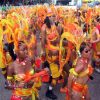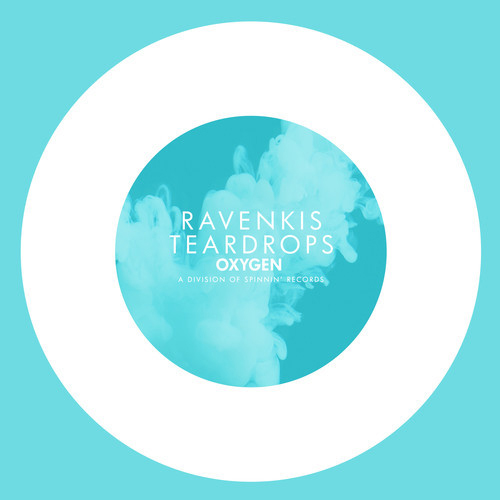Listeners:
Top listeners:
00:00
00:00
volume_up
chevron_left
-
 play_arrow
play_arrow
HCF-Radio HCF Radio
-
 play_arrow
play_arrow
London Calling Podcast Yana Bolder
Origin
The annual Carnival in Trinidad dates back to the 1780s, when an influx of immigrants from the French West Indies emigrated to Trinidad in response to the Cédula de Población. These immigrants included French planters and ‘free coloureds’ (free people of mixed race), as well as enslaved Africans. The Mas tradition started in the late 18th century with French plantation owners organizing masquerades (mas) and balls before enduring the fasting of Lent. Enslaved Africans, who could not take part in Carnival. They are said to have staged their own mini-carnivals, but using their own rituals and folklore and imitating or mocking their masters’ masquerade balls.
Enslaved Africans also formed parallel celebration called “Canboulay”. Canboulay (from the French cannes brulés, meaning burnt cane) The festival was characterized by drums, singing, calinda dancing, chanting, and stick-fighting. Canboulay is considered is a precursor to Trinidad and Tobago Carnival, and has played an important role in the development of the music of Trinidad and Tobago.
Calypso music was developed in Trinidad in the 17th century from the West African Kaiso and canboulay music brought by African slaves imported to that Caribbean island to work on sugar plantations. These slaves, brought to toil on sugar plantations, were stripped of all connections to their homeland and family and not allowed to talk to each other. They used calypso to mock the slave masters and to communicate with each other. Many early calypsos were sung in French Creole by an individual called a griot. As calypso developed, the role of the griot became known as a chantuelle and eventually, calypsonian. Additional traditions were introduced to Trinidad by enslaved Africans during the 18th century. These include the calinda, a form of martial art involving stick-fighting. The calinda is likely of African origin, and is accompanied by music and dancing.
In 1833, the British government passed the Slavery Abolition Act, and Emancipation took effect August 1, 1834. After Emancipation, freed Africans first celebrated their freedom on 1 August the anniversary of their emancipation, and soon began celebrating emancipation during the Carnival season. As part of this transformation, they started carrying burning sugarcane in celebration of Canboulay. The carnival soon featured dancing by men and women in masks.
During the mid- and late-1800s, the colonial government tried various ways to suppress Carnival and Carnival festivities. These prohibitions resulted in civil disorder, including the Canboulay riots of 1881 and 1884. In 1884, the colonial government passed the Peace Preservation Act, in an attempt to prevent violence breaking out during the Carnival. The Act prohibited public carrying of torches, drumming, blowing horns, and stick-fighting (or the assembly of ten or more people with sticks). It also established the official start of Carnival as 6:00 A.M. (the Monday before Lent).
Steelpan
Stick fighting and African percussion music were banned in 1881, in response to the Canboulay Riots. They were replaced by bamboo “Bamboo-Tamboo” sticks beaten together, which were themselves banned in turn. In 1937 they reappeared, transformed as an orchestra of frying pans, dustbin lids and oil drums. These steelpans (or pans) are now a major part of the Trinidadian music scene and are a popular section of the Canboulay music contests. In 1941, the United States Navy arrived on Trinidad, and the panmen, who were associated with lawlessness and violence, helped to popularize steel pan music among soldiers, which began its international popularization.
J’ouvert.
J’ouvert (translated from French as “break of day”) symbolizes the start of the official two days of Carnival. Beginning early Monday, revelers parade through town in the tradition of the Canboulay celebrations. “Jouvay” (as it is commonly pronounced and spelled)[31] features a variety of homemade or satirical costumes. The celebration involves participants dousing themselves in oil, mud, and powder, and dancing to calypso and soca music through the streets. This is a stark contrast to the attractive and more formal costumes that are donned later in the day on Carnival Monday and on Tuesday.
Written by: admin
Rate it
Similar posts
Search
Categories
Recent Comments
No comments to show.Featured post

Latest posts
Current show

Dance Hits
By Tom Cuffia
For every Show page the timetable is auomatically generated from the schedule, and you can set automatic carousels of Podcasts, Articles and Charts by simply choosing a category. Curabitur id lacus felis. Sed justo mauris, auctor eget tellus nec, pellentesque varius mauris. Sed eu congue nulla, et tincidunt justo. Aliquam semper faucibus odio id varius. Suspendisse varius laoreet sodales.
closeUpcoming shows

Frequency One
Mixed by Dj Monster
7:00 pm - 11:00 pm
Sins At The Mic
With Wilhelmina Red
11:00 pm - 11:45 pm
Streets Of NY
Presented by Jerome Blues
11:45 pm - 11:55 pm
Art Of Gossip
Monday and Friday at 23:00
11:55 pm - 12:00 am
Frequency One
Mixed by Dj Monster
12:00 am - 3:00 amChart
HERE IT GOES YOUR COPYRIGHT TEXT. CAN ALSO CONTAIN LINKS LIKE THIS















Post comments (0)